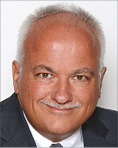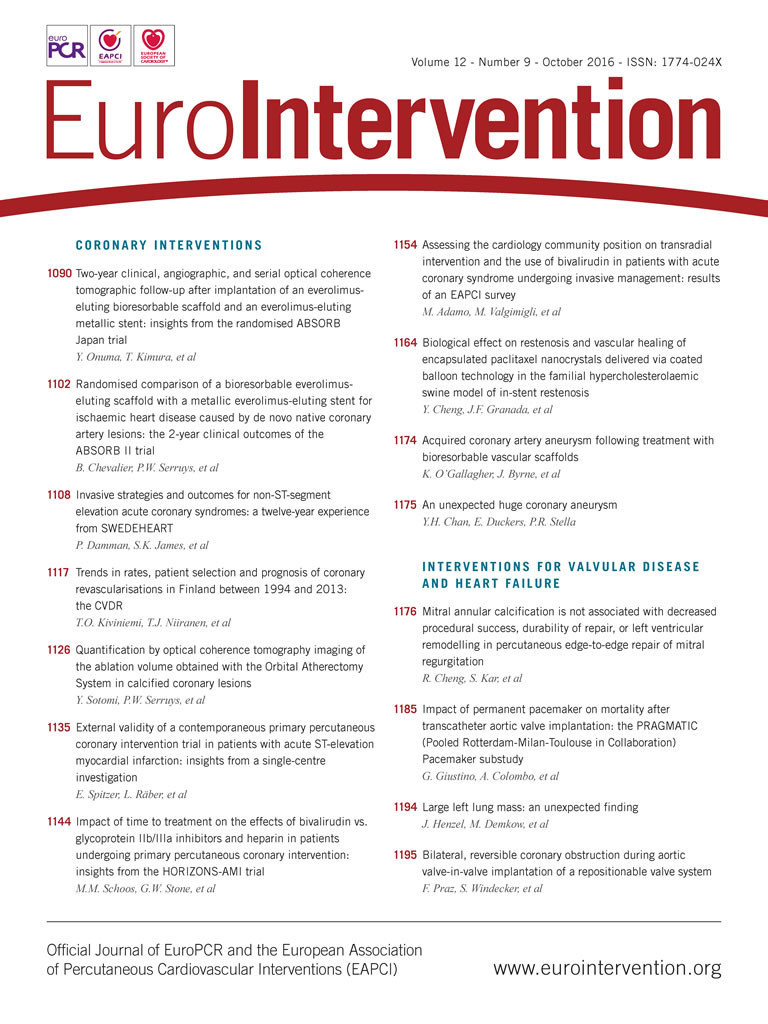
Autumn has begun with tremendous momentum for our association and specialty. The summer ended with the unanimous adoption of our new constitution, approved during the Rome meeting of the European Society of Cardiology (ESC).
Changing constitution is much more than a simple bureaucratic notion: it marks a new and dynamic chapter in the integration of the EAPCI within the framework of our parent organisation, the ESC. Along with other subspecialty associations, our work together has become much more fluid, with the position of EAPCI president now officially a member of the ESC board. This has involved a flurry of recent meetings – the ESC Board meeting in Rome, another in Nice and, at the end of September, a meeting of all the association presidents, again at the European Heart House in Nice. Just how this translates into action, and how it will unfold for the members of our association, will be the subject of future columns in the coming months.
PCR London Valves: where the world of valves comes together!
What especially interests us this month – and, from the numbers who participated, you as well! – was the 2016 edition of PCR London Valves, the world’s pre-eminent meeting for the treatment of valvular heart disease. We need no greater proof of this than the 2,403 of you who came to our new location in London after last year’s successful Berlin odyssey. This represents a 10% increase over the 2015 participation, and is approximately 20% greater than the last London meeting in 2014. Speaking on behalf of my fellow course directors, Corrado Tamburino, Stephan Windecker, Nicolò Piazza, and Bernard Prendergast, we were very pleased by the quality of the science, the depth of the interaction and the commitment on the part of all present to advance our understanding of valve treatments.
The popularity of London Valves was put to the test this year by the choice of a new and much larger venue than our previous London meetings. This was a change that was much appreciated by the attendees, not simply sparked by the rise in participation, but by our commitment to creating the most ideal situations for the creative exchange of knowledge – an exchange that takes place not just between the faculty and audience, but also with our industry partners who made every effort to ensure a highly ethical and educative experience.
The scientific content of the meeting was, in a word, outstanding.
Beginning with PCR Innovators Day – a special time before the main course begins for networking and discovery where participants are introduced to emerging clinical techniques and technologies with a special emphasis on imaging – PCR London Valves contained a full programme dedicated to the entire field of valvular heart treatment, from the now universally accepted TAVI to the latest research in mitral and tricuspid therapies. Hands-on sessions, introduction to new devices, concentration on imaging techniques and their application and use, all of this was accomplished against the backdrop of an excellent and informative series of live transmissions that further underlined the practical, clinical notions that we had come together to share.
The “Great Valve Debate” was well attended. This year’s topic, “Is TAVI the new gold standard in the treatment of patients with aortic stenosis?” elicited the kind of interaction typical of the quality of the exchange we have come to expect from a PCR meeting. Aortic treatment is now clearly well established. Although there is much still to be understood about mitral interventions, we are beginning to see the widespread acceptance of certain devices and techniques, for instance, the growing use of the MitraClip. It is the tricuspid valve which has become the object of great attention today for all of us. The effective treatment of tricuspid regurgitation is a clear and pressing unmet need for which, at the present time, we are limited to using medical therapy alone. Tricuspid regurgitation remains a much more complex scenario for us to address clinically: the anatomical geometry makes imaging difficult, and using echo, whether 2D, 3D or 4D, is challenging. During the London meeting we were able to explore the five experimental devices currently being used, but these only in extreme cases. It is clear that we are only at the beginning of what might prove to be a long road towards treating the tricuspid valve non-invasively.
For all of these procedures and techniques, from the now well-known TAVI procedures to experimental devices employed in mitral and tricuspid interventions, hands-on training is always welcome, and the training facilities provided by our industry partners were informative and in demand. This year, they also included the opportunity to explore different devices and techniques using deer hearts.
The design of the exhibition space, where the central part of the congress hall connecting the various rooms where sessions took place was occupied by our industry partners, was well received. Here the size of the exhibitors’ individual booths was secondary to their ability to interact with the participants who, as they went from one session to another, could easily stop at these booths to look at the latest devices presented in the meetings. In this way, both participants and industry were pleased to have this natural place for the kind of positive exchange that underlines our partnership.
An outstanding reference and companion to PCR London Valves – the EuroIntervention Supplement
As a complement to the meeting – and guest edited by the course directors themselves – EuroIntervention prepared a supplement mirroring the content of this year’s London Valves. Distributed during the meeting, this dedicated publication represented one of the most comprehensive collections of data on valvular heart treatments available today. From cutting-edge technology to reviews of existing procedures, it proved to be much in demand by participants, faculty and industry partners alike, with valuable sections that introduced, in a telescopic fashion, the latest technologies in aortic, mitral and tricuspid interventions. Preparing this supplement was a significant challenge, and the fact that the challenge was successfully met by EuroIntervention only underlines the dynamic relationships being woven today by the EAPCI – remember that this is the official journal of our association, and PCR London Valves is one of our officially sanctioned courses.
We are proud of what we have accomplished together, as an association and as a speciality, and we look forward to the future where the groundwork of what we are doing today, and the foundations of what we are building together, will lead to advances in patient care.
We look forward to your future participation in the EAPCI and to welcoming you once again next year from 24 to 26 September 2017 for the next edition of the “Heart Team” course, PCR London Valves!

